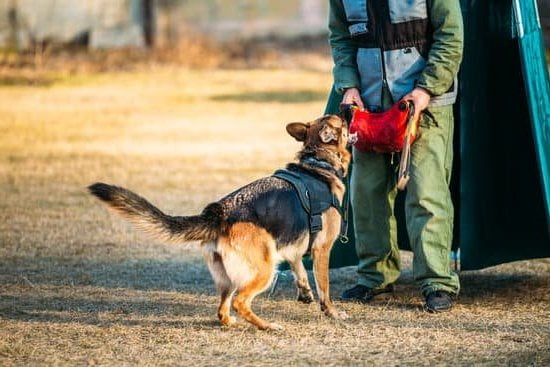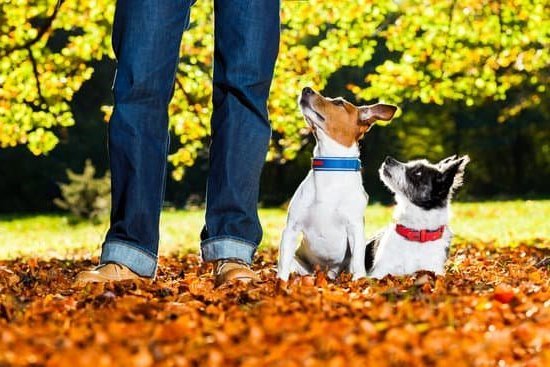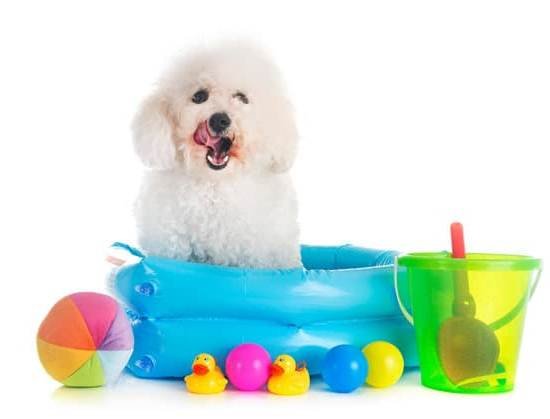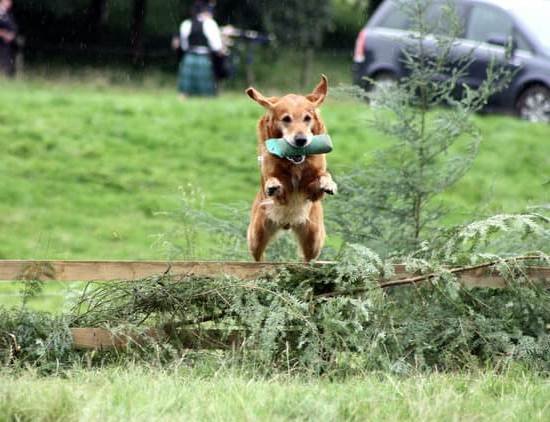How do you house train your dog? House training, also known as potty training, is a crucial aspect of owning a dog. It involves teaching your furry friend where and when to relieve themselves in an appropriate manner. By establishing a consistent routine, positive reinforcement, and patience, you can effectively house train your dog and create a harmonious living environment for both you and your pet.
House training is essential for the well-being of both the dog and its owner. It prevents indoor accidents, protects household items from being soiled, and fosters a sense of cleanliness within the home. Additionally, it also helps to strengthen the bond between pets and their owners by establishing clear communication and expectations.
In this article, we will explore the various aspects of house training, including setting up a routine, choosing a designated potty area, using positive reinforcement techniques, maintaining consistency, cleaning up accidents effectively, exercising patience and persistence, as well as problem-solving common challenges. By understanding the importance of these key elements and implementing them consistently, you can successfully house train your dog for a happier and more harmonious coexistence.
Setting Up a Routine
Feeding Schedule
To house train your dog effectively, it is crucial to establish a consistent feeding schedule. By feeding your dog at the same times each day, you can regulate their bathroom breaks and help them learn when to expect food. Most adult dogs should be fed twice a day, while puppies may require more frequent meals. It is recommended to feed your dog at specific times, such as 7 am and 5 pm, to create a routine.
Bathroom Breaks
In addition to regular feeding times, setting a schedule for bathroom breaks is essential for successful house training. Puppies, in particular, need frequent bathroom breaks throughout the day. For adult dogs, aim for taking them outside first thing in the morning, after meals, before bedtime, and at regular intervals during the day. Be consistent with the timing of these breaks to help your dog understand when and where they should go potty.
Sleep Schedule
Establishing a sleep routine for your dog can also contribute to successful house training. Dogs thrive on routine and predictability, so it’s important to create a set bedtime and wake-up time for your furry friend. This will not only regulate their sleeping pattern but also help in managing their bathroom needs. By providing structure and consistency in their daily routine, you can make the house training process smoother and more effective for both you and your dog.
Choosing a Designated Potty Area
House training a dog is an important aspect of pet ownership, as it sets the foundation for a well-behaved and obedient companion. One key element of house training is choosing a designated potty area for your dog to do their business.
This helps to establish consistency and create a clear understanding for your pet on where it is appropriate to relieve themselves. By following some simple tips, you can select the right spot for your dog to use when nature calls.
When choosing a designated potty area for your dog, it’s important to consider accessibility and convenience. Select an area that is easily accessible from the main living space, so that you can quickly take your dog outside when needed. It should also be a spot that is relatively private, as some dogs may be more comfortable doing their business in a more secluded area.
Additionally, take into account the surface of the potty area. Some dogs may prefer to relieve themselves on grass or soil, while others may be more inclined to use gravel or artificial turf. Observing your dog’s natural preferences can help in selecting the most suitable surface for their designated potty area. By making the potty area appealing to your dog, you are more likely to achieve success in house training them effectively.
To further encourage your dog to use the designated potty area, consider using positive reinforcement techniques such as treats and praise when they use it appropriately. This will help create a positive association with the chosen spot and reinforce good behavior. With patience and consistency, you can effectively teach your dog where it is acceptable to go potty, leading to a well-mannered and house-trained pet.
| Aspect | Description |
|---|---|
| Accessibility | Choose an easily accessible spot from the main living space |
| Privacy | Select a relatively private area for your dog’s comfort |
| Surface | Consider your dog’s preferences when choosing the surface of the potty area |
| Positive Reinforcement | Use treats and praise to encourage good behavior in using the designated potty area |
Positive Reinforcement
House training your dog is an essential aspect of their overall behavior and well-being. Positive reinforcement is a highly effective method for encouraging good behavior in your furry friend. Through the use of treats, praise, and rewards, you can effectively communicate to your dog what behaviors are desired and reinforce their positive actions.
Using Treats
When house training your dog, using treats as a form of positive reinforcement can be incredibly effective. Choose small, tasty treats that your dog enjoys and give them immediately after they exhibit the desired behavior, such as going to the bathroom in the designated area. This will help create a positive association in their mind and encourage them to repeat the behavior in the future.
Praise and Rewards
In addition to using treats, verbal praise and physical rewards such as petting or playtime can also be powerful forms of positive reinforcement. When your dog successfully follows the house training routine or displays good behavior, be sure to shower them with enthusiastic praise and affection. This will strengthen the bond between you and your pet while reinforcing their understanding of what is expected of them.
Establishing Consistency
Consistency is crucial when using positive reinforcement to house train your dog. Make sure that everyone in the household follows the same training plan and uses consistent cues and rewards. This will prevent confusion for your pet and ensure that they understand exactly what is expected of them. By consistently using treats, praise, and rewards to encourage good behavior, you will effectively communicate with your dog how to act appropriately within the home environment.
By incorporating positive reinforcement methods into your house training routine, you can effectively communicate with your dog what behaviors are desirable while strengthening the bond between you and your furry friend. With patience, persistence, and consistency, you can successfully house train your dog using treats, praise, and rewards to encourage good behavior.
Consistency Is Key
House training your dog is a crucial step in establishing a harmonious and clean living environment for both you and your pet. Consistency is key when it comes to successfully house training your dog. It is important to stick to the training plan and avoid giving mixed signals, as this can confuse your pet and hinder their progress.
One way to maintain consistency in house training is by establishing a routine. This involves setting up a consistent schedule for feeding, bathroom breaks, and sleep. Dogs thrive on routine, so having a set schedule can help them understand when it’s time to go outside to do their business. Additionally, choosing a designated potty area and consistently taking your dog to that spot will reinforce the appropriate behavior.
Positive reinforcement is another important aspect of maintaining consistency in house training. Using treats, praise, and rewards to encourage good behavior sends a clear signal to your dog about what is expected of them. Consistently rewarding them for going potty in the right spot will reinforce this behavior and make them more likely to repeat it.
| Aspect | Description |
|---|---|
| Establishing a Routine | Setting up consistent schedule for feeding, bathroom breaks, and sleep. |
| Designated Potty Area | Tips for selecting the right spot for your dog to do their business. |
| Positive Reinforcement | Using treats, praise, and rewards to encourage good behavior. |
Cleaning Up Accidents
Accidents are a normal part of the house training process for dogs, but it’s important to clean up accidents properly to prevent repeat incidents and eliminate odors. One of the most effective strategies for cleaning up accidents is to act quickly. As soon as you notice that your dog has had an accident indoors, it’s crucial to clean up the mess right away.
Use paper towels or a disposable cloth to absorb as much of the urine or feces as possible, and then use an enzymatic cleaner designed specifically for pet odors to thoroughly clean the area. This type of cleaner will break down the organic compounds in the urine and feces, eliminating the odor and reducing the likelihood that your dog will be drawn back to that spot.
In addition to cleaning up accidents promptly and effectively, it’s also important to prevent repeat accidents by addressing any underlying issues that may be contributing to your dog’s indoor elimination. If you notice that your dog is having frequent accidents despite consistent training and schedule, it may be necessary to consult with a veterinarian to rule out any potential medical issues.
Additionally, make sure that your dog’s designated potty area is easily accessible at all times. If your dog has difficulty reaching their potty spot or if they have a strong preference for going in a different location, it may be necessary to make adjustments to their routine or the layout of your home.
Remember that consistency is key when house training your dog, so be patient and persistent in addressing accidents and preventing them from happening again in the future. Stay positive and continue using treats and praise to reinforce good behavior, and don’t hesitate to seek guidance from a professional trainer if you’re struggling with cleaning up accidents or preventing repeat incidents.
Patience and Persistence
House training a dog is an important and necessary step in ensuring a harmonious relationship between you and your furry friend. It requires patience, consistency, and persistence to successfully teach your dog where to do their business. Understanding that house training takes time and effort is crucial in staying motivated throughout the process.
One of the key elements in house training your dog is setting up a routine. This includes establishing a consistent schedule for feeding, bathroom breaks, and sleep. Dogs thrive on routine, so having a predictable schedule will help them understand when it’s time to go outside to relieve themselves. Here are some tips for setting up a routine:
- Feed your dog at the same times each day.
- Take your dog outside first thing in the morning, after meals, before bedtime, and frequently throughout the day.
- Designate specific potty areas outside where you want your dog to do their business.
In addition to setting up a routine, positive reinforcement plays a crucial role in house training your dog. Using treats, praise, and rewards to encourage good behavior will help reinforce the desired actions. When your dog successfully goes potty in the designated area, be sure to shower them with praise and give them a treat. This will create a positive association with going potty outside.
Consistency is also key when it comes to house training your dog. It’s important not to give mixed signals or confuse your pet by changing the rules or expectations. Stick to the training plan and be patient as your dog learns where they should go potty. Remember that accidents will happen, so it’s important to stay consistent in reinforcing the desired behavior without getting discouraged by setbacks.
Problem-Solving
House training your dog is an important part of establishing a harmonious environment in your home. However, it’s not uncommon for pet owners to encounter challenges and issues along the way. Here are some common problems that may arise during the house training process, along with strategies for addressing them:
- Accidents inside the house: It’s natural for your dog to have occasional accidents, especially during the early stages of training. If you catch your dog in the act, interrupt them by clapping your hands or making a loud noise, then immediately take them outside to their designated potty area. Clean up any accidents with an enzymatic cleaner to eliminate odors that may attract your dog back to the same spot.
- Inconsistency in behavior: Some dogs may struggle to understand the concept of house training, leading to inconsistent behavior. In these cases, it’s important to reinforce positive actions with rewards and praise consistently. Stick to a strict schedule for feeding and bathroom breaks, and be patient as your dog learns what is expected of them.
- Fear or anxiety: Certain dogs may exhibit signs of fear or anxiety when it comes to using their designated potty area. This could be due to previous negative experiences or discomfort with the surroundings. To address this issue, gradually introduce your dog to their potty area using positive reinforcement techniques such as treats and verbal praise.
Troubleshooting these common challenges requires patience, consistency, and understanding of your dog’s individual needs. By addressing these issues head-on and implementing appropriate solutions, you can help your furry friend successfully navigate the house training process.
Remember that every dog is unique, and what works for one may not work for another. It’s essential to tailor your approach based on your dog’s temperament and behavior patterns throughout the training process.
Overall, remaining patient and persistent while problem-solving will ultimately lead to a well-behaved and house-trained dog that brings joy and companionship into your home.
Conclusion
In conclusion, house training your dog is a crucial part of responsible pet ownership. By establishing a routine, choosing a designated potty area, using positive reinforcement, and maintaining consistency, you can effectively teach your dog where and when to do their business. This not only prevents messes in the house but also creates a harmonious living environment for both you and your furry friend.
Successfully house training your dog can lead to several benefits. Firstly, it fosters a strong bond between you and your pet as you work together to achieve a common goal. Additionally, it can save you time and effort in the long run by reducing the need for constant clean-up of accidents. Moreover, a well-trained dog is more likely to be welcomed in various social settings, which can enhance both your and your pet’s quality of life.
By embracing patience and persistence throughout the house training process, addressing challenges that may arise, and staying motivated, you can set your dog up for success. Remember that every dog is different, so what works for one pup may not work for another. With dedication and understanding, house training your dog can be a rewarding experience for both of you.
Frequently Asked Questions
What Is the Proper Way to House Train a Dog?
The proper way to house train a dog is to establish a routine for feeding, walking, and bathroom breaks. Positive reinforcement and consistency are key in teaching the dog where it’s appropriate to relieve themselves.
How Do You Stop a Dog From Peeing and Pooping in the House?
To stop a dog from peeing and pooping in the house, it’s important to first rule out any medical issues. Once that’s done, focus on consistent training, supervision, and using positive reinforcement when the dog goes in the appropriate place.
How Long Does It Take to Potty Train a Dog?
The time it takes to potty train a dog can vary based on factors such as the breed, age, and individual temperament of the dog. On average, it can take anywhere from a few weeks to several months of consistent training for a dog to be fully potty trained.

Welcome to the blog! I am a professional dog trainer and have been working with dogs for many years. In this blog, I will be discussing various topics related to dog training, including tips, tricks, and advice. I hope you find this information helpful and informative. Thanks for reading!





